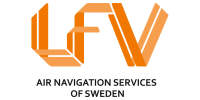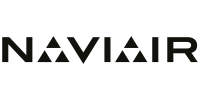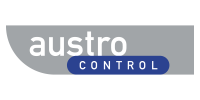Implementing harmonised SWIM (Y) solution in COOPANS ANSPs and general PCP compliance
Timeline





Description
COOPANS expects a need for a new FDP solution to cope finally with FO-IOP in January 2025. Development needs to be finished in 2023 to perform final integration and long-term tests. So, COOPANS needs to cover all PCP requirements for AF 1-4 with any relation to IOP latest by early 2023 and prepare AF 5 & AF 6 items due 2025-27. To do the final integration, COOPANS is planning a future “new FDP solution integration project” in 2023-25 (not part of this project).
To be prepared, this project builds the bases. The first SWIM integration on a test platform integrating Extended A-MAN functionality will be done to secure the needed data-communication based on SWIM also for the future “new FDP” project (beside bringing the basics for implementing Extended A-MAN via SWIM).
This will require all contracts to be defined and signed in the timeframe of 2018-19 and therefor all projects need to be clustered into one PCP program starting early 2018 to ensure optimum planning and control of resources to cope with the challenge and minimise administrative costs.
The COOPANS ambition is to harmonise and synchronise to the extent possible to gain economy of scale during implementation and enable future savings from standardised solutions based on the LFV and AustroControl SWIM related projects already started.
This Implementing Project will implement the below mentioned capabilities either implementing SWIM or being based on SWIM in all 5 COOPANS ANSPs, and ensure timely PCP compliance for COOPANS member ANSPs in additional local exploitation projects. The SWIM items will be aligned with European wide solutions in AF 5.1. The different capabilities and interdependencies with other projects are addressed for each Work Package as follows:
Work Package (WP) 1: Programme Management
WP 2: SWIM yellow (Y) infrastructure: For some topics under WP 2, AustroControl and LFV are already running projects funded by previous calls (see below).
As those projects are related to this project and parts of the work will be done under the framework of those projects by AustroControl and LFV, they have a lower calculated budget in WP2 than the other partners.
For AustroControl and LFV WP2 contains only additional costs for maturing the already running projects of AustroControl and LFV to synchronize with the COOPANS standard solution. Those additional costs as well as the added coordination effort are the bases for the calculation.
The 2 related projects are:
LFV: 2015_118_AF5
AustroControl: 2016_149_AF5
WP 3: Cyber security & PKI: As LFV wants to go further with their cyber security program than COOPANS common, LFV IP 2017_061_AF5 ""Application of Cyber Security to ANSP and SWIM at LFV"" will cover that. The common gap closure for COOPANS is estimated to be 35%. Outside of the scope of this IP are:
o AIM and MET systems/services
o Legacy systems to be connected via SWIM
o SWIM blue profileFurthermore there is a dependency with 2017_084_AF5, SWIM Common PKI and policies & procedures for establishing a Trust framework which is running in parallel to our project, why we predict the need of iterations.
WP 4: Extended AMAN as SWIM service: Extended AMAN was selected, as this component will remain in the COOPANS Flight Object solution by 2025, where the FDP itself might not. Therefore it is not planned within this project to replace any legacy interfaces like Aeronautical Fixed Telecommunication Network (AFTN), OLDI etc. in the present FDP solution.
COOPANS develops the bases (SWIM yellow profile) based on the implementation of Extended AMAN. This solution will then also be used for the implementation of FO-IOP which is planned, but not part of the action.WP 5: Initial TBS: This WP is relevant to all COOPANS sites, regardless of TBS regulation, to improve RWY throughput, as implementing the TBS capability and HMI, but based on distance separation. The solution is based on the technical component for TBS, to ensure a later simpler implementation at those sites obliged to implement TBS.
The solution will be deployed at all COOPANS sites for local exploitation. Initial TBS means that the technical solution will be deployed in this step.WP 6: Upgrade the COOPANS capabilities to support FRA operations in even higher traffic densities: This WP addresses technical support of the already implemented FRA, in order to keep up performance and to improve capacities. Some issues occured, as neighbouring ANSP are implementing FRA and there is a need for better automation of coordination capabilities and better monitoring of traffic outside COOPAN's own Area of Responsibility (AoR). Therefore the Area of Interest (AoI) and related functionalities and tools, will need to be expanded.
WP 7: SWIM monitoring & Control
WP 8: Ensure internal capabilities to manage the SWIM solution when implemented.
WP 9: SWIM Safety case
Specific objectives:
The IP specifically aims to:
Develop and implement a COOPANS harmonised SWIM yellow profile infrastructure in all 5 participating ANSPs, based on LFV experience and connection of the common Topsky environment.
Develop and implement a harmonised Cyber Security and PKI Management for this harmonised SWIM infrastructure and the connection of COOPANS Topsky platform. For security reasons it can probably not be standardised, but shall ensure option for future collaboration on services.
Develop and implement a SWIM Extended AMAN service capability, both as supplier and subscriber.
Develop and implement a technical baseline for a later TBS project, where required, ensuring the technical capabilities, based on SESAR standard and ensure early improvements of RWY throughput at all COOPANS sites.
Improve system support for Free route airspace, ensuring and increasing peak hour capacities, as FRA operations grow European wide.
Implement sufficient monitoring capabilities for the new SWIM technology.
Ensure sufficient training of in-house competence, to operate a SWIM environment, and enable a high agility in development of future services and maintenance hereof.
Ensure international standards during development of SWIM environment, by hiring temporary external expertise for specific tasks.
Expected Results:
A COOPANS common SWIM infrastructure is implemented with a harmonised cyber security framework, enabling future expanded cooperation within the COOPANS group on development of future SWIM services, involving common components, such as the Topsky ATM platform. The benefit of harmonisation is future economy of scale.
For each COOPANS ANSP, , a SWIM baseline infrastructure is implemented for development of all SWIM services, including those not of common COOPANS interest, and a work share on common COOPANS services, such as an Extended AMAN service as the pilot common SWIM service. Benefit is potential cost savings.
For each participating ANSP, this action will be an enabler for local development of services within AF 5.3.1, 5.4.1, 5.5.1 and 5.6.1.
Furthermore each participating ANSP is given an in-house capability, to produce and maintain an agile organisation for future development of SWIM services, with an expert back up/support from increasing organisational liability through cooperation.
A technical baseline is available for development of local TBS projects, as well as some initial improvements to RWY throughput, by implementing a spacing tool, based on distance, introducing the TBS HMI as a first step towards TBS, and can be used at all COOPANS sites. The benefit is improved RWY throughput, as more accurate spacing on the final has been identified under SESAR validations on Vienna airport, even only used with distance based separation.
Finally peak hour en-route capacities are improved at all COOPANS ANSP as FRA airspace is becoming more widely used in Europe (if not done, the risk is actually a decrease in En-route capacities).
Performance Benefits:
The project will provide the following performance benefits, as per the performance grid:
Improvement of interoperability - 1% (This project is mainly an enabler)
Improvement of safety – En-Route by 5%
Improvement of capacity – En-Route by 5%
Improvement of resilience – En-Route by 2%
Improvement of capacity – TMA by 2%"
Additional Information
- Project Type: Air Navigation Service Provider
- CEF Call Year: 2017
- Civil/Military: Civil
- Multistakeholder: Yes
- Main AF: AF5 - Initial System Wide Information Management
- Sub AF: S-AF 5.2 - SWIM Technical Infrastructure and Profiles
- Progress Percentage: 62%